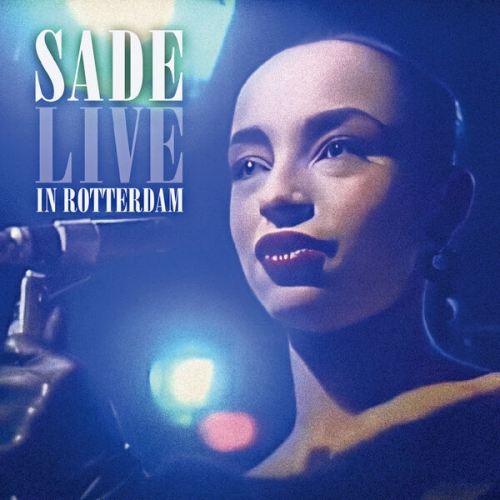Guillaume Rebinguet-Sudre, Claire Gratton, Jean-Luc Ho - Tomaso Albinoni: Sonates pour violon (2015) [Hi-Res]

Artist: Guillaume Rebinguet-Sudre, Claire Gratton, Jean-Luc Ho
Title: Tomaso Albinoni: Sonates pour violon
Year Of Release: 2021
Label: L'Encelade
Genre: Classical
Quality: flac lossless / flac 24bits - 88.2kHz +Booklet
Total Time: 00:54:01
Total Size: 312 / 1003 mb
WebSite: Album Preview
TracklistTitle: Tomaso Albinoni: Sonates pour violon
Year Of Release: 2021
Label: L'Encelade
Genre: Classical
Quality: flac lossless / flac 24bits - 88.2kHz +Booklet
Total Time: 00:54:01
Total Size: 312 / 1003 mb
WebSite: Album Preview
01. 12 Trattenimenti armonici per camera, Sonata No. 10 in C Minor, Op. 6: I. Grave
02. 12 Trattenimenti armonici per camera, Sonata No. 10 in C Minor, Op. 6: II. Allegro
03. 12 Trattenimenti armonici per camera, Sonata No. 10 in C Minor, Op. 6: III. Adagio
04. 12 Trattenimenti armonici per camera, Sonata No. 10 in C Minor, Op. 6: IV. Allegro
05. Sonata a violino solo composta per il Signore Pisendel: I. Adagio
06. Sonata a violino solo composta per il Signore Pisendel: II. Allegro
07. Sonata a violino solo composta per il Signore Pisendel: III. Adagio
08. Sonata a violino solo composta per il Signore Pisendel: IV. Allegro
09. 12 Trattenimenti armonici per camera, Sonata No. 6 in A Minor, Op. 6: I. Grave adagio
10. 12 Trattenimenti armonici per camera, Sonata No. 6 in A Minor, Op. 6: II. Allegro
11. 12 Trattenimenti armonici per camera, Sonata No. 6 in A Minor, Op. 6: III. Adagio
12. 12 Trattenimenti armonici per camera, Sonata No. 6 in A Minor, Op. 6: IV. Allegro
13. Sonata No. 4 in A Major: I. Adagio
14. Sonata No. 4 in A Major: II. Allegro
15. Sonata No. 4 in A Major: III. Adagio
16. Sonata No. 4 in A Major: IV. Allegro
17. 12 Trattenimenti armonici per camera, Sonata No. 2 in G Minor, Op. 6: I. Grave adagio
18. 12 Trattenimenti armonici per camera, Sonata No. 2 in G Minor, Op. 6: II. Larghetto
19. 12 Trattenimenti armonici per camera, Sonata No. 2 in G Minor, Op. 6: III. Largo
20. 12 Trattenimenti armonici per camera, Sonata No. 2 in G Minor, Op. 6: IV. Allegro
![Guillaume Rebinguet-Sudre, Claire Gratton, Jean-Luc Ho - Tomaso Albinoni: Sonates pour violon (2015) [Hi-Res]](https://www.dibpic.com/uploads/posts/2021-07/1626676081_jean-luc-ho-tomaso-albinoni-sonates-pour-violon-2015-back.jpg)
The recording features a selection of sonatas for violin and basso continuo by Tomaso Albinoni (1671-1751), who was rather an unusual character.He produced highly refined works, using a finely-honed structural architecture and an outpouring of melody lines which are seductive, fluid and unpredictable,making them a wonderful musical representation of early 18th century Venice.
Albinoni, a Venetian, published his first collection of violin sonatas in 1708. The income produced by his family’s business manufacturing playing cards meant that he composed music solely for his own enjoyment, unlike many of the composers of his time who wrote to order, commissioned by wealthy patrons. He travelled around Europe, also dedicating a sonata to the virtuoso German violinist Pisendel, just as Beethoven was later to do with Kreutzer.J.S. Bach himself drew inspiration from the Venetian composer’s works, using the melodies to teach his pupils basso continuo.Although Albinoni left us a large number of chamber music works, mainly for the violin;unfortunately, the majority of his opera scores disappeared in Dresden during the Second World War.
Albinoni became famous as a musician only rather reluctantly and - somewhat paradoxically - his original compositions remain little-known. He left us a body of work involving a constant striving after a refined, highly expressive musical language;his writing has a very “classical” elegance and style, combined with powerful lyrical expression, which goes beyond mere virtuosity.
In order to offer the truest possible recreation of Albinoni’s musical and sound world, Guillaume Rebinguet-Sudre worked closely with the violin maker Christian Rault, who produced an instrument typical of the Venetian style of the period, inspired by a 1717 Montagnana.
Albinoni’s music has a classic ‘poise’, allied to a strong emphasis on lyrical expression rather than simple virtuosity. His instantly recognizable, almost idiosyncratic, style is saturated with counterpoint – but an unusual kind of counterpoint often characterized by the combination of contrasted rather than thematically related lines. It is the first solo recording of Guillaume Rebinguet-Sudre, a man of many artistic sensibilities, who has developed his own musical vision. Claire Gratton (cello) and Jean-Luc Ho (Harpsichord) are playing with him. Claire plays with many ensembles, including Stadivaria, La Simphonie du Marais, L’Ensemble Baroque Nomade, Pulcinella, Le Concert d’Astrée, Le Cercle de l’Harmonie, Pygmalion and has taken part in numerous recordings. As a continuo player, Jean-Luc often performs with La Rêveuse, Opera Fuoco and Le Concert Spirituel
Although oal personality. If he shared with the ‘Red Priest’ a Venetian heritage, celebrity as a violinist and a lifelong interest iften ‘twinned’ with Antonio Vivaldi (1678–1741) in the popular imagination, Tomaso Albinoni (1671–1751) had a very distinct musicn composing vocal music as well as sonatas and concertos (both men were closely involved with female singers: Albinoni married one, and Vivaldi made one his protégée and companion). He differed from the younger man in remaining, at least at a formal level, an amateur composer (his family was licensed by the state to manufacture playing cards), in remaining throughout his life independent of patrons and institutions (he ran a private school of singing) and in writing instrumental music primarily for publication rather than for individual customers.








